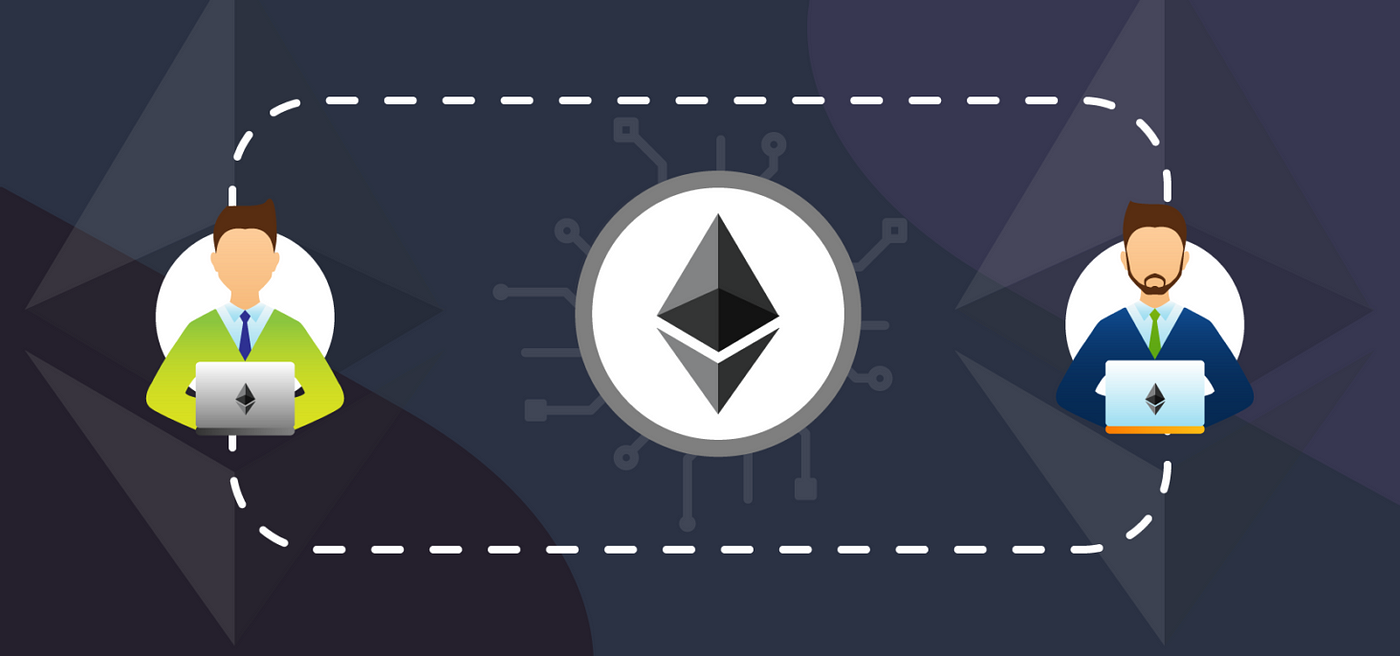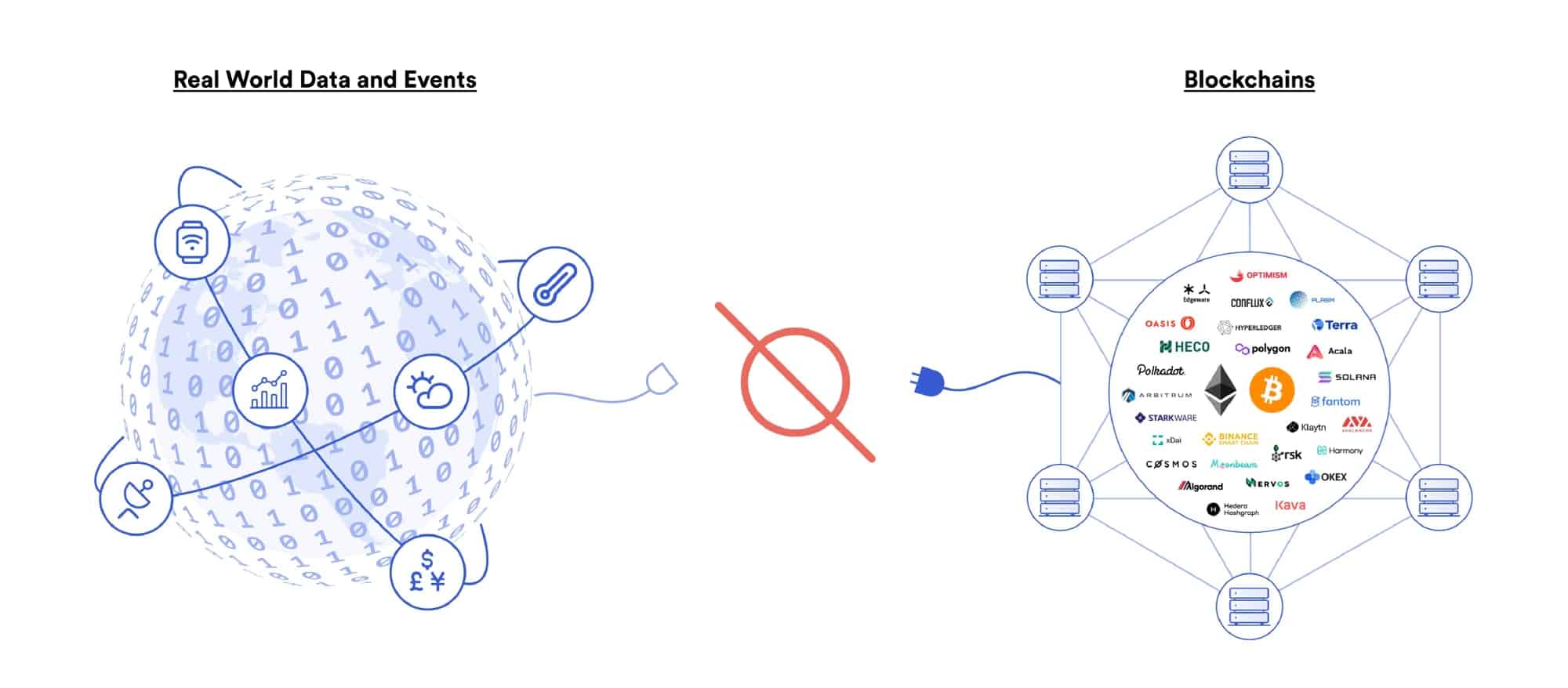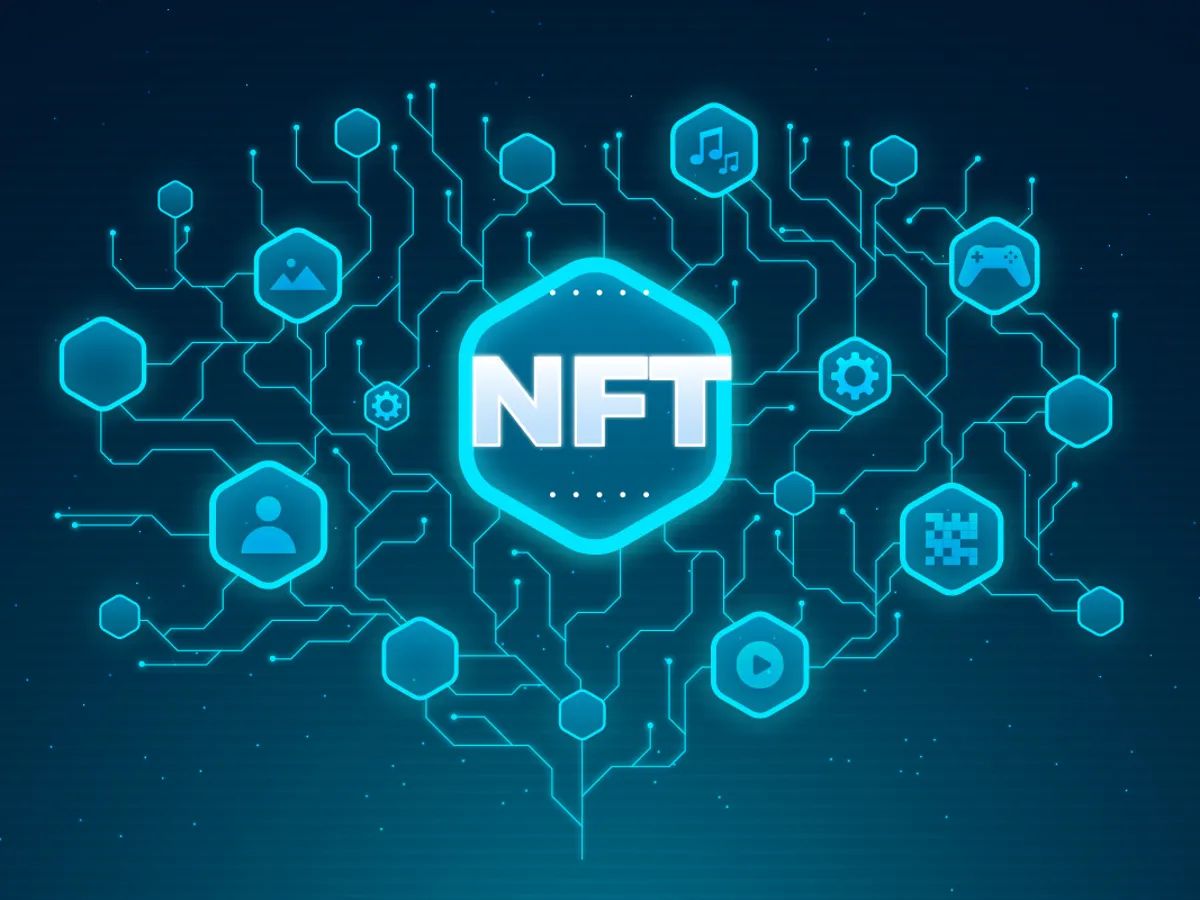Introduction
The concept of an open source blockchain has revolutionized the world of technology and finance. Blockchain technology, most famously associated with cryptocurrencies like Bitcoin, is a decentralized and transparent ledger that securely records transactions. It has gained significant attention due to its potential to revolutionize various industries, including finance, supply chain management, healthcare, and more.
An open source blockchain refers to a blockchain platform where the underlying code is open and freely available to the public. This means that anyone can access the source code, modify it, and contribute to its development. Open source blockchain platforms promote transparency, collaboration, and innovation, as developers from around the world can collaborate and build upon the existing codebase.
The open source nature of these blockchain platforms fosters a community-driven approach, where ideas and enhancements are shared openly and can be tested and validated by a wider range of users. This collaborative environment enables faster development, bug identification, and overall improvement of the blockchain platform.
Open source blockchains often rely on consensus mechanisms, such as Proof of Work (PoW) or Proof of Stake (PoS), to validate and secure transactions on the network. Furthermore, they typically allow for the creation of smart contracts, which are self-executing contracts with the terms of the agreement directly written into code.
This article aims to explore the concept of open source blockchain in greater detail, highlighting its characteristics, benefits, challenges, and providing examples of popular open source blockchain platforms. Additionally, we will discuss how individuals can get involved in open source blockchain development, fostering innovation and contributing to the growth of this transformative technology.
Definition of Open Source Blockchain
An open source blockchain refers to a blockchain platform where the underlying code is made freely available to the public. It allows anyone to access, modify, and distribute the source code, promoting transparency, collaboration, and innovation within the blockchain community.
The term “open source” refers to software or technology that grants users the freedom to view, modify, and distribute the source code. In the context of blockchain, open source platforms provide a foundation of code that is open for scrutiny and improvement by developers around the world.
Open source blockchains operate on a decentralized network. In contrast to traditional centralized systems, such as banks or government institutions, where a single entity controls the transactions and data, open source blockchains distribute this responsibility among multiple participants.
Due to its open nature, an open source blockchain allows users to verify the authenticity and integrity of the transactions recorded on the ledger. The transparent nature of the code ensures that there are no hidden vulnerabilities or malicious functionalities that could compromise the security of the network.
Open source blockchains often incorporate consensus mechanisms, such as Proof of Work (PoW) or Proof of Stake (PoS), to validate and secure transactions. These mechanisms ensure agreement between participants on the state of the blockchain, preventing fraudulent or unauthorized transactions.
Furthermore, open source blockchains commonly support the creation of smart contracts. Smart contracts are self-executing contracts with predefined rules written directly into code. They automatically execute specified actions when predetermined conditions are met, eliminating the need for intermediaries and increasing efficiency in various industries.
The open source nature of blockchain allows developers to build upon existing codebases, creating new features, functionalities, and improvements. This collaborative environment encourages innovation and drives the rapid evolution of blockchain technology.
Overall, an open source blockchain provides a transparent, collaborative, and secure platform for recording and verifying transactions. Its open nature fosters innovation and ensures that the technology remains accessible to a wider community of developers and users.
Characteristics of an Open Source Blockchain
An open source blockchain possesses several key characteristics that set it apart from traditional, closed-source blockchain platforms. Understanding these characteristics is vital in comprehending the advantages and potential of open source blockchain technology.
1. Transparency: One of the defining characteristics of an open source blockchain is transparency. The underlying code is freely available for anyone to examine, ensuring that all transactions and operations within the blockchain network can be audited and verified. This transparency promotes trust and eliminates the need for intermediaries in transactions.
2. Decentralization: Open source blockchains operate on a decentralized network, meaning there is no central authority or single point of control. Instead, the network is distributed among multiple participants, who collectively validate and secure transactions. Decentralization enhances security, as it eliminates the risk of a single point of failure or manipulation.
3. Collaboration: The open source nature of these blockchains fosters a collaborative environment. Developers from around the world can access, modify, and contribute to the blockchain codebase. This collaboration drives innovation, as developers can build upon and improve existing code, leading to the rapid evolution of the blockchain platform.
4. Community-driven: Open source blockchains often have a vibrant and engaged community of developers and users. This community actively contributes to the development and maintenance of the blockchain platform. Ideas, enhancements, and bug fixes are shared openly, creating a supportive ecosystem that encourages continuous improvement.
5. Flexibility: Open source blockchains offer flexibility in terms of customization and adaptability. Developers can tailor the blockchain platform to suit specific requirements and use cases. This flexibility allows for the implementation of various consensus mechanisms, smart contracts, and other features based on the needs of the community or industry.
6. Security: Open source blockchains prioritize security by leveraging the expertise of a global community of developers. The open nature of the code allows for thorough inspections and audits, helping to identify vulnerabilities or weaknesses quickly. Additionally, the distributed nature of open source blockchains makes them highly resistant to attacks and eliminates the risk of a single point of failure.
7. Innovation: Open source blockchains contribute to innovation by providing a platform where ideas can be freely exchanged and implemented. The collaborative environment allows for rapid experimentation and the development of new features and functionalities. This innovation fuels the growth and adoption of the blockchain technology across various industries.
These characteristics collectively make open source blockchains powerful tools for an array of applications, offering transparency, security, and collaborative opportunities to transform industries and drive technological advancement.
Benefits of Open Source Blockchain
Open source blockchain platforms offer numerous advantages that make them attractive for businesses, developers, and individuals alike. Understanding these benefits is essential in realizing the potential and value of open source blockchain technology.
1. Transparency and Trust: The transparency of open source blockchains builds trust among participants by allowing them to verify transactions and operations. This transparency reduces the reliance on intermediaries and increases the overall trust in the system.
2. Cost-effective: Open source blockchain platforms can be cost-effective for organizations as they eliminate the need for costly licensing fees associated with proprietary software. The freely available code allows businesses to adopt and utilize the blockchain technology without significant financial barriers.
3. Collaborative Innovation: Open source blockchains foster collaboration and innovation. Developers from around the world can contribute to the improvement and evolution of the blockchain platform, resulting in a rapid and continuous innovation cycle.
4. Customizability: Open source blockchain platforms provide flexibility and adaptability. Businesses and developers can customize the blockchain network to suit their specific requirements, whether it’s modifying consensus mechanisms or incorporating additional functionalities through smart contracts.
5. Security and Resilience: The open source nature of blockchain technology allows for thorough security inspections and audits by a global community. This enhances security and helps identify vulnerabilities quickly. Additionally, the decentralized nature of open source blockchains makes them highly resistant to attacks and eliminates single points of failure.
6. Industry Collaboration: Open source blockchains enable collaboration among different industries by providing a common platform for data sharing, supply chain management, and more. This collaboration streamlines processes, reduces inefficiencies, and promotes interoperability among various sectors.
7. Greater Adoption: Open source blockchain platforms have seen widespread adoption, leading to large and active developer communities. This adoption not only fosters innovation but also ensures that the technology remains accessible, as open source projects are often supported by a diverse range of contributors.
8. Long-term Sustainability: Open source blockchains have long-term sustainability as they are not dependent on a single entity or organization for development and maintenance. The collaborative efforts of the community ensure that the blockchain platform continues to evolve and adapt to new challenges.
Open source blockchains offer significant benefits, including transparency, cost-effectiveness, collaboration, customizability, security, industry collaboration, increased adoption, and long-term sustainability. These benefits make open source blockchain technology a powerful tool for businesses and developers seeking to harness the potential of decentralized and transparent digital transactions.
Challenges of Open Source Blockchain
While open source blockchain platforms offer numerous benefits, they also come with certain challenges. Understanding and addressing these challenges is crucial for the successful implementation and adoption of open source blockchain technology.
1. Lack of Centralized Governance: Open source blockchains operate in a decentralized manner, which means there is no centralized governance or authority. This can lead to challenges in decision-making, coordination, and resolving conflicts within the community.
2. Security and Privacy Concerns: While open source blockchains are generally considered secure, vulnerabilities can still exist in the codebase. Furthermore, the transparent nature of the technology raises privacy concerns, as transactions and data are visible to all participants.
3. Compatibility and Interoperability: Ensuring compatibility and interoperability between different open source blockchain platforms can be challenging. Although efforts are being made to establish common standards, the lack of universal protocols can hinder seamless communication and data exchange.
4. Development Fragmentation: The open source nature of blockchain technology allows for multiple forks and offshoots of the original codebase. This fragmentation can lead to diverging development paths, making it difficult to maintain compatibility and consistency across different projects.
5. Learning Curve: Working with open source blockchain platforms requires a certain level of technical expertise and knowledge. Developers and organizations may face a learning curve in understanding the intricacies of blockchain technology and how to effectively utilize and contribute to the open source codebase.
6. Community Management: Building and managing a cohesive and active community around an open source blockchain platform can be challenging. Ensuring effective communication, handling conflicts, and encouraging meaningful contributions require dedicated community management efforts.
7. Regulatory and Legal Complexities: Open source blockchains may face regulatory and legal challenges, particularly when it comes to compliance with data protection, financial regulations, and intellectual property rights. Addressing these complexities and ensuring compliance can be a significant challenge.
8. Scaling and Performance: As open source blockchain platforms gain widespread adoption, scalability and performance become critical factors. Ensuring that the platform can handle a large number of transactions without compromising security and efficiency is a continuous challenge.
Despite these challenges, the benefits of open source blockchain technology often outweigh the difficulties. With the collective efforts of the community and ongoing advancements, many of these challenges can be overcome or mitigated over time.
Examples of Open Source Blockchain Platforms
Open source blockchain platforms have gained significant popularity and have been implemented in various industries. Below are some notable examples of open source blockchain platforms:
1. Ethereum: Ethereum is one of the most well-known open source blockchain platforms. It enables the creation of decentralized applications (dApps) and smart contracts. Ethereum’s open source code has fostered an active developer community and fueled the growth of the decentralized finance (DeFi) ecosystem.
2. Hyperledger Fabric: Hyperledger Fabric is an open source enterprise-grade blockchain platform designed for business applications. It offers a modular architecture that allows organizations to build private, permissioned blockchain networks. Hyperledger Fabric is backed by the Linux Foundation and has gained support from numerous industry-leading organizations.
3. Cardano: Cardano is an open source blockchain platform that aims to provide a secure and scalable infrastructure for the development of decentralized applications and smart contracts. It employs a scientific approach and focuses on formal verification, ensuring the correctness and reliability of code.
4. Stellar: Stellar is an open source blockchain platform designed for fast, low-cost international monetary transactions. It enables the issuance and transfer of digital assets, supporting cross-border transactions and financial inclusion. Stellar’s open source nature has encouraged the development of various applications and integrations in the financial industry.
5. EOSIO: EOSIO is an open source blockchain protocol that provides a scalable and flexible infrastructure for decentralized applications. It aims to enhance user experience and enable high transaction throughput. EOSIO’s open source codebase has led to the creation of numerous decentralized applications and governance models.
6. Corda: Corda is an open source blockchain platform designed for businesses and financial institutions. It focuses on privacy and restricts access to transaction data, making it suitable for sensitive applications. Corda’s open source codebase promotes industry collaboration and customizability.
7. Tezos: Tezos is an open source blockchain platform that utilizes a unique self-amendment mechanism to allow stakeholders to propose and vote on protocol upgrades. It aims to provide secure and formal verification of smart contracts, enabling decentralized governance and sustainability.
These examples represent just a fraction of the diverse open source blockchain platforms available. Each platform brings its own unique features, use cases, and ecosystem. Their open source nature fosters collaboration, innovation, and wider adoption of blockchain technology across various industries.
How to Get Involved in Open Source Blockchain Development
If you’re interested in contributing to the development of open source blockchain projects, there are various ways you can get involved:
1. Explore Existing Projects: Start by exploring existing open source blockchain projects and familiarize yourself with their goals, codebase, and development process. This can be done by accessing their repositories on platforms like GitHub.
2. Contribute to Codebase: If you have coding skills, consider contributing to the codebase of open source blockchain projects. You can do this by submitting bug fixes, proposing new features, or improving existing functionalities. Follow the project’s guidelines and engage with the development community through forums or communication channels to understand the contribution process.
3. Test and Provide Feedback: Open source projects often welcome testing and feedback from the community. You can contribute by testing new releases or proposed changes, identifying bugs, and providing feedback on the user experience. This helps in improving the reliability and usability of the blockchain platform.
4. Document and Translate: Documentation is crucial for open source projects. If you have strong writing or translation skills, consider contributing by writing documentation, creating tutorials, or translating existing documentation into different languages. This helps make the project more accessible to a wider community.
5. Participate in Discussions: Engage in discussions and forums related to open source blockchain development. Ask questions, share your ideas, and get involved in discussions about the future direction of the project. This can help you learn from others and establish connections with like-minded individuals.
6. Organize or Attend Hackathons: Hackathons and developer events focused on blockchain technology are great opportunities to network, learn, and contribute. You can participate individually or form teams to work on innovative solutions and contribute to the open source blockchain community.
7. Support Education and Outreach: Open source blockchain projects often require support in education and outreach activities. You can contribute by organizing workshops, webinars, or creating educational content to help others understand and adopt blockchain technology.
Remember that open source blockchain development requires continuous learning and keeping up with the latest advancements. Engage with the community, stay updated on project developments, and collaborate with others to make meaningful contributions to open source blockchain projects.
Conclusion
The rise of open source blockchain technology has brought about significant advancements in transparency, collaboration, and innovation. Open source blockchain platforms, such as Ethereum, Hyperledger Fabric, and Cardano, provide a foundation for decentralized and secure digital transactions.
Through their transparency and decentralized nature, open source blockchains offer numerous benefits, including trust, cost-effectiveness, collaboration, customizability, security, industry collaboration, increased adoption, and long-term sustainability.
However, open source blockchain development also comes with its own set of challenges, such as governance, security and privacy concerns, compatibility, development fragmentation, learning curves, community management, and regulatory complexities. Addressing these challenges requires ongoing efforts from the community.
For those interested in contributing to open source blockchain projects, there are various ways to get involved. Exploring existing projects, contributing to the codebase, testing and providing feedback, documenting and translating, participating in discussions, organizing or attending hackathons, and supporting education and outreach are all valuable ways to make a meaningful contribution.
Open source blockchain technology has the potential to revolutionize industries and drive technological advancement. By embracing transparency, collaboration, and innovation, the open source blockchain community can continue to expand and refine the capabilities of this transformative technology.
As the world becomes increasingly interconnected and digital, open source blockchain presents a promising solution for building secure and decentralized systems. By actively participating in open source blockchain development, individuals and organizations can contribute to the advancement of this technology and shape the future of finance, supply chain management, governance, and more.

























